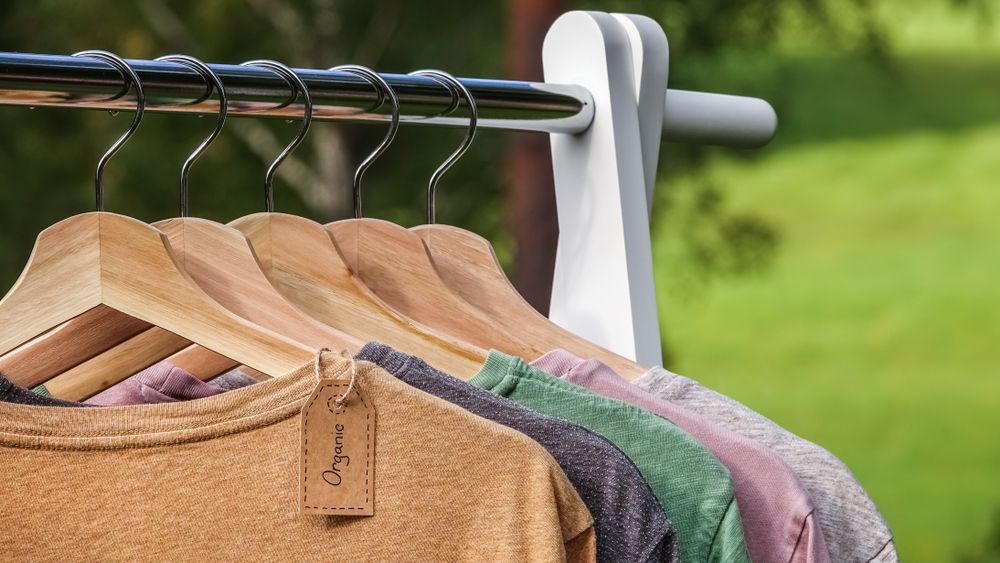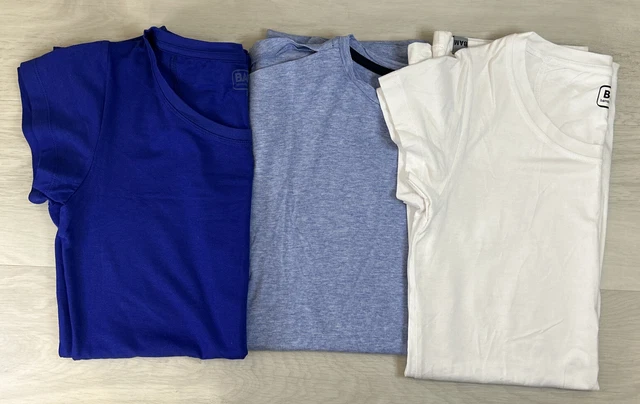Great Ideas For Choosing Bamboo Clothing
Wiki Article
Why Is It That Hemp Is Stronger, More Durable And Bi-Degradable Than Cotton?
Hemp, due to its natural properties as well as the method of growing it is believed to be more durable and renewable than cotton. Here's why- Biodegradability-
Natural Fibers - The hemp's fibers can be biodegradable. The hemp textiles and clothes naturally decompose after being thrown away. They then return to the earth, without leaving lasting remnants. This is in contrast to synthetic fibers, like polyester which can take many years to decompose.
Lack of Synthetic Additives- Hemp textiles typically do not contain synthetic additives or chemical treatments that can hinder biodegradability. However, some cotton fabrics are treated with synthetic chemicals, such as dyes or finishes which can hinder the biodegradation.
Durability-
Hemp fibers are considered for being strong and durable. Textiles and clothing made of hemp tend to be less likely get damaged and last longer than some cotton products. The long-lasting nature of hemp clothing means that it can endure longer wear and washing cycles before it begins to deteriorate.
Hemp fabrics are less prone to pilling than cotton. This attribute contributes to their longevity as well as overall quality.
Regenerative Agriculture-
Soil Quality- Hemp has regenerative characteristics when it is grown in a sustainable manner. Hemp can help improve the quality of soil by improving soil health. The roots deep of hemp can prevent soil erosion. This regenerative element could leave the soil in better shape for the future growth.
Low environmental impact Sustainable hemp cultivating methods involve the use of only a few pesticides. Contrary to traditional cotton farming, its chemical use can cause soil degradation and pollution of the water.
Water Efficiency-
Hemp generally requires less water than cotton. Its drought-resistant nature means it thrives even without irrigation or in rain-fed conditions. This makes it a great option for areas that have limited water supplies.
Hemp can easily be incorporated into crop rotations to enhance the soil's health. It also decreases the chance of disease accumulation and soil loss. Crop rotation isn't as prevalent in traditional cotton farming.
Hemp has plenty of flexibility. It is able to create a variety of products, such as clothing, paper construction materials, textiles. This versatility allows hemp to be utilized in a broad spectrum of industries using sustainable and regenerative techniques.
In addition to these advantages of hemp, it's crucial to be aware that both hemp as well as cotton are produced sustainable (or not) dependent on the techniques used in farming and the processing techniques. Choosing hemp products that are produced using eco-friendly and ethical practices can maximize its environmental advantages. Selecting organic cotton products will also help mitigate the environmental problems that are associated with conventional cotton production. Read the most popular hemp clothes url for blog advice including patagonia double knee pants, hemp mens jeans, hemp fleece fabric, organic hemp fabric, patagonia hemp overalls, women's all seasons hemp canvas bomber hoody jacket, patagonia volley shorts, hemp shorts patagonia, hemp fabric clothing, patagonia iron forge jacket and more.

What Gives Hemp Fibers That Are Breathable, Moisture-Wicking And Thermoregulatory Properties?
Hemp fibers possess unique structural and chemical properties which allow them to be extremely breathable. They are also moisture-wicking. These properties result from the interaction of a variety of elements. Microscopic structure- Hemp fibers possess pore-like, hollow structures that allow air to circulate within the fibers. Hemp textiles are highly breathable because of their porosity. The structure is weaved into fabric to allow air to pass through. This promotes ventilation and stops moisture and heat from accumulating on the skin.
Hemp fibers are able to absorb water and wick away moisture. They are able to absorb sweat or moisture from your body, thus removing the feeling of wetness. Hemp fibers can also wick water away from your body by dispersing the moisture over a large surface area that lets it evaporate more quickly. The moisture-wicking properties keep you dry and comfortable during intense physical activities or during hot weather.
Hemp fibres possess natural insulation properties. In cold temperatures, they hold heat near your body and offer warmth. They also permit the heat and moisture to escape during hot weather and help to get cool. The thermoregulating capability inherent in hemp makes it suitable for clothing worn in a variety of conditions and temperatures.
Hemp fibers have natural antimicrobial properties that can help to inhibit the growth and spread of odor-causing bacteria. This is a factor in the freshness and odor resistance odor of hemp clothing during times of exercise.
Hemp fibers can be durable and long lasting, so hemp clothing won't be able to breathe. This extends the lifetime of hemp clothes, reducing their requirement to replace them and the environmental impact.
UV Protection- Hemp fibres offer a natural UV protection that shields your skin from damaging UV radiation. The UV blocker adds the versatility of hemp clothing which makes it ideal for outdoor activities.
It is important to remember that these characteristics are found in hemp fibers. They are not dependent on chemical treatments or additives. Hemp is a naturally-occurring fibre with many properties that make it comfortable and sustainable for clothing. This is especially true for activewear, outdoor wear and warm-weather clothing. These qualities are also preserved when hemp fibers transform into textiles. This makes them a highly sought-after material for clothing that is eco-friendly. View the most popular our site for hemp clothing for website advice including hemp yoga clothes, hemp athletic wear, mens hemp trousers, hemp clothing wholesale, patagonia hemp vest, hemp boxer shorts, patagonia hemp shorts, hemp pants mens, hemp clothing wholesale, american made hemp clothing and more.

What are differences between hemp and Bamboo fibers?
Two different fibers, hemp and bamboo, are used for textile production. Each one has its own properties and unique characteristics. Here are the key distinctions between bamboo and hemp fibers- 1. Plant Source-
Hemp- Hemp fibers are derived from the hemp stalks plant, particularly from the bast fibers that are in the outer layer. Hemp is adaptable, quick-growing and was used in the production of different products for centuries.
Bamboo fibers are made of bamboo pulp. Bamboo is a rapid-growing grass, renowned for its strength and speed of renewal.
2. Fiber Characteristics
Hemp- Hemp is known for its durability and strength. They are one of the strongest fibers found in nature and get softer each wash, which is why they make great textiles.
Bamboo Fibers- Bamboo fibers possess soft, silky texture. They may be less dense and less robust than hemp, however they are appreciated for their comfort.
3. Texture and Feeling
Hemp fabric is somewhat coarse and has a textured feeling. This is evident in its raw state. It is a comfortable fabric but has a different texture compared to bamboo.
Bamboo The bamboo fabric is soft silky and incredibly soft. It is often described by those who wear it as feeling like a mix of cotton and silk.
4. The ability to breathe and the moisture-wicking
Hemp Fibers- Hemp fibers help to absorb water and are naturally breathable. They keep you cool and dry during hot weather.
Bamboo- Bamboo fibers are also extremely humid and breathable. They also have a moisture-wicking. They're stocked with micro-gaps that enhance their capacity to regulate moisture and temperature.
5. Environmental Impact-
Hemp Hemp is an eco-friendly fiber because of its fast growth rate, its low need for water and resistance against insects. These elements help reduce the need for herbicides or pesticides. Hemp can absorb CO2 out of the atmosphere as it expands.
Bamboo is known as a material that is sustainable. It grows quickly, requires little water, and does not require synthetic pesticides. Certain bamboos are considered to be sustainable, including Moso bamboo.
6. Processing-
Hemp Fibers- Hemp fibers are subject to extensive processing, which will be required to separate the outer bast from the wooden core. The process may involve decorations, retting and mechanical separation.
Bamboo- Bamboo is typically made by a process called the viscose- or rayon-process. This involves the use of chemical substances to degrade the bamboo fiber. This process could be harmful for the environment if not handled responsibly. However, some bamboo textiles use closed loop systems that minimize the waste of chemicals.
7. Versatility-
Hemp Fibers- Hemp fibers have a variety of applications, including clothing, textiles paper, building materials.
Bamboo Fibers Bamboo fibers have been used in clothing, textiles and many other items.
Summary The two types of bamboo provide unique advantages and are sustainable. Your decision will depend on your preference for the environment as well as what you are looking for in terms of specific characteristics and properties. See the top rated advice about bamboo clothes for more info including cozy earth clothes, ladies bamboo t shirts, t shirts bamboo, bamboo shorts mens, bamboo newborn clothes, bamboo bed clothes, bamboo jacket, mens boxer shorts bamboo, bamboo yoga leggings, bamboo maternity wear and more.
